
Learn how to reveal your muscle mass and look great at the intermediate level.

If you’ve been training for a few years, your physique probably looks similar to mine in this picture: intermediate level of muscle development and around 20% body fat.
That’s already better than 90% of the general population, so congrats on that! But you probably want more. The problem with this physique is that you’re not muscular enough to look big and not lean enough to have muscle definition either. You’re somewhere in between (what I call “no man’s land”). And that’s not a particularly impressive look. I know that if I were to post this picture on Instagram, the trolls would roast me with the classic comment: “Do you even lift?” And their comments would sting a bit because I’d have to admit I really don’t look like I train as much as I do.
Well, if you find yourself in this situation, there are two paths you can take to “look like you lift”:
Path #1 – Bulk up: get to an advanced level of muscle development while trying to stay at around 20% body fat (this is sometimes called “going bear mode”)
Path #2 – Get lean: improve muscle definition by losing some fat and maintaining (or slightly increasing) your muscle mass

Either choice is fine. It all comes down to your preferences and goals.
However, I believe that getting lean is the better choice for the majority of intermediate lifters. In fact, I’d even go so far as saying that getting to a lower body fat percentage is the ONLY way most regular gym-goers can ever look impressive. There are two reasons for this:
- Most lifters cannot or are unwilling to put in the work required to build and maintain muscle beyond the intermediate level.
- Low body fat can make you look amazing even at an intermediate level of muscle development.
Let me expand on both of these points. This will help you determine if getting lean is the right choice for you.
Why advanced muscle development is hard to achieve
In my conversations with audience members and gym-goers over the years, I’ve found that intermediate lifters generally want to bulk up until they achieve advanced muscle development and only then go into a fat loss phase. The thinking goes: I’ll first build lots of muscle and only then I’ll reveal it. This is a solid strategy in theory. But in practice it often fails because many guys build muscle slowly at the intermediate level and they experience frequent setbacks (such as micro-injuries) that reset their progress. So what ends up happening is that they remain permanent residents of “no man’s land” – not quite big, not quite lean.
Here’s what I mean.
Getting to the intermediate level is pretty easy for most people. It was probably easy for you too. All you had to do was go to the gym a few times a week and lift weights with a focus on progression. It didn’t really matter that you made some mistakes, missed some workouts, and didn’t track nutrition too closely. The gains kept coming anyway.
But now that you’ve built your first 5-8 kg of muscle (10-18 lbs) and maxed out your noob gains, making further progress is more difficult. If you’re someone with average genetics*, you have to follow a much more structured training and nutrition plan in order to progress to the next level. You have to: not miss workouts, train harder (possibly with higher frequency and more volume), follow a strict progression scheme, experiment with different exercises and training splits, master exercise technique, manage injuries and joint pain, track calories and protein, and ensure proper sleep and recovery. This is the price you have to pay to build lots of muscle when you’re not very gifted genetically: you have to be almost as dedicated as a professional athlete.
* Learn more about genetic differences…
When you look at the results of any training study, you see that there is a lot of variation in how quickly and how much muscle people build in response to the same training program and the same nutrition plan. For example, the graph below shows the results of several studies by Ahtiainen and colleagues that put 287 individuals on the same training program for 22 weeks (almost 6 months).

The average increase in quad size for the whole group of trainees was 4.8% but there were enormous differences between individuals:
– The majority of study participants saw modest growth, between 2 and 10%.
– About one third of participants were low responders, meaning they showed only minor gains or no gains at all in muscle size. Some people even appeared to lose some muscle, though this could partially be due to measurement errors.
– And a few people were high responders. The top 35 lifters gained at least three times more muscle than the group average. The most gifted individual grew six times more than average (assuming no measurement errors).
You see a similar pattern in pretty much any other training study (the graphs below show four random examples): The least responsive 15% of test subjects barely make any gains, about 70% of people make low-to-medium improvements, and the most gifted 15% gain about three times more muscle and strength than the group average. Sometimes the difference between the best and the worst responding individual is 40-fold.

As you’ve probably guessed, these differences are mostly due to genetics. Those who make better gains seem to have a higher number of nuclei and satellite cells per muscle fiber, produce more ribosomes following training, have more androgen receptors, and express different levels of certain microRNA molecules that boost protein synthesis. High responders essentially have more of the “cellular machinery” that constructs new muscle tissue and this allows them to build a larger amount of muscle following each workout.
“Higher number of nuclei and satellite cells per muscle fiber…”
A muscle fiber’s maximum size is limited to the volume of sarcoplasm which can be overseen by its nuclei. Each nucleus oversees a finite sarcoplasmic area. When a fiber is stimulated to grow beyond what its current number of nuclei can handle, satellite cells (which are a type of stem cell found in muscle tissue) fuse with muscle fibers and donate their nuclei. This process is called myonuclear addition. Those extra nuclei can support the protein synthesis demands of additional sarcoplasmic volume, allowing the fiber to get bigger without losing its functionality (the fiber can maintain the same sarcoplasmic volume:nuclei ratio). Since individuals have varying numbers of nuclei and satellite cells per muscle fiber, they have different upper limits for how quickly their muscles can grow and how large they can ultimately become.
“Produce more ribosomes following training…”
Ribosomes are the cellular “machines” that construct new proteins from amino acids. The instructions for how to create a certain protein are provided by molecules called RNA. Ribosomes read RNA molecules and use those instructions to link amino acids in a way that creates the type of protein specified by the RNA molecule. When we talk about muscle protein synthesis, we’re talking about the work of ribosomes – they are the ones that synthesize the proteins which become muscle tissue. Ribosomes have only a temporary existence and are constantly being produced and replaced in a process called ribosome biogenesis. Following strength training, ribosome biogenesis increases above baseline so that a higher number are present to synthesize the proteins necessary for repairing and growing the muscle fibers. But the increase in ribosome production following training appears to vary between people. Some individuals create more ribosomes than others and this allows them to synthesize protein at a higher rate, leading to faster muscle recovery and growth.
“More androgen receptors…”
Testosterone and other androgens exert their effects on muscle fibers through binding to androgen receptors localized in the sarcoplasm. Androgen receptors are proteins that undergo a conformational change (change shape) when they bind to androgens, allowing them to enter the nucleus of the muscle fiber. Inside the nucleus, the activated androgen receptor binds to specific DNA sequences known as androgen response elements located in the promoter regions of genes involved in muscle growth and protein synthesis. This binding event activates the transcription of RNA molecules from these genes. These newly synthesized RNA molecules are then exported from the nucleus to the sarcoplasm, where they are used as “blueprints” by ribosomes to construct proteins. The increase in protein synthesis mediated by androgens occurs through both increased mRNA transcription and increased translational efficiency. So if an individual has more androgen receptors, the additional proteins synthesized in response to their activation ultimately lead to more muscle growth.
“Produce different levels of certain microRNA molecules…”
MicroRNAs are molecules which can prevent messenger RNAs from being translated into proteins by ribosomes. When microRNAs bind to a messenger RNA molecule, they can either prevent it from being translated into protein or cause it to be degraded, depending on the specific microRNA and mRNA involved. Following resistance training, certain microRNAs are upregulated or downregulated (meaning their production is increased or decreased). The presence or absence of certain microRNAs can adjust the rate of muscle protein synthesis up or down. But it turns out that the expression of microRNA varies between individuals. High responders adjust the production of certain microRNA molecules in a pattern that is more favorable for muscle development, maintenance, and repair. For example, a 2011 study by Davidsen and colleagues found that high responders maintained high levels of miR-378, miR-29a, and miR-26a following training whereas low responders did not. Those microRNAs promote muscle protein synthesis, reduce protein breakdown, and increase ribosome biogenesis.

Now, does this mean the average guy at the gym can’t ever build lots of muscle? No. He definitely can. He just has to put in way more time, effort, and attention into training and nutrition to get the same results as a more gifted individual. For example, if a high responder can get to an advanced level in 2-3 years just by training hard and eating intuitively, a less gifted individual would need a much more structured approach to both training and nutrition which involves not missing workouts, training harder (possibly with higher frequency and more volume), following a strict progression scheme, experimenting with different exercises and training splits, managing injuries and joint pain, and doing dedicated bulk and cut cycles. It might take him 4-10 years of consistent, injury-free training to achieve advanced muscle development.
So what’s the problem then? Why are so many lifters stuck at the intermediate level?
Well, the reality is that most gym-goers cannot or do not want to put in this much effort into training and nutrition.
There are many reasons why people can’t execute a highly structured training and nutrition plan: lack of time, family obligations, frequent travel, joint pain, old injuries, or just plain-old lack of discipline. And then there are people who could dedicate themselves to fitness but just don’t want to. This is not a criticism. I get it. There’s a limit to how much time and effort some lifters are willing to dedicate to fitness before it disrupts other areas of their lives to an unacceptable degree.
These two categories of lifters stay at intermediate muscle development for long periods of time (maybe for their whole lifting career).
But interestingly, there’s a third category of long-term intermediates. This one is not talked about nearly enough: the lifters that do put in the necessary work but fail to maintain advanced status due to frequent setbacks.

Maybe you’re one of these lifters yourself. You have a stretch of several months where you train really hard, you follow the program, you track your lifts, you don’t miss workouts, you eat well, sleep well, everything is going great and you make great gains in muscle and strength. You even become advanced in some lifts and muscle groups. But then you experience a setback that erases pretty much all the progress you’ve made. Maybe you get shoulder pain. Or knee pain. Or a lower back injury. Or you get sick. Or you experience a disruptive life event like extended travel, job change, tight deadline at work, a breakup, birth of a baby, etc. Something just has to happen right when you’re in peak condition! This setback prevents you from training/eating properly for a while and that’s enough to erase the progress you’ve made over a period of several months because muscle loss happens much faster than growth. The result is that even though you’re a smart and dedicated lifter, you just go up and down, up and down through the intermediate stage, never quite being able to maintain advanced muscle development for more than a few weeks or months.
If any of this sounds like you, I propose you try something different this year.
I propose that you take the next 3-6 months to get lean. Think about it. If you’re not going to be big anytime soon, why not be lean instead? This will make you look amazing with the muscle mass you already have and also set you up for a long bulk afterwards to build more size. When you’re lean, even though you will be smaller than you are now, with the shirt off you will look bigger. And best of all, you will look like you lift!
The power of low body fat
Whenever Hollywood wants to sell you the idea that a character is strong and can beat up the bad guys, they get the actor very lean (generally below 12% body fat). Why? Because muscle definition creates the illusion of size. An actor at 10% body fat appears to have more muscle than at 20% body fat, even though in reality he is smaller overall. Add in a muscle pump and the right lighting and the difference is like night and day.

Jason Statham in The Mechanic (2016)

Brad Pitt in Fury (2014)

Henry Cavill in Immortals (2011)

Andy Withfield in Spartacus (2010)
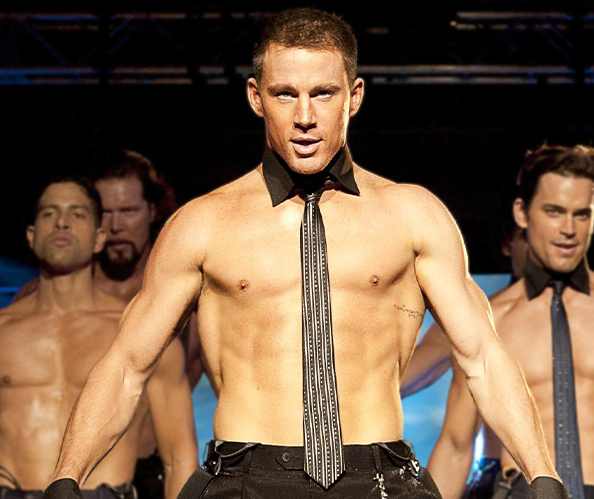
Channing Tatum in Magic Mike (2012)

Daniel Craig in Quantum of Solace (2008)
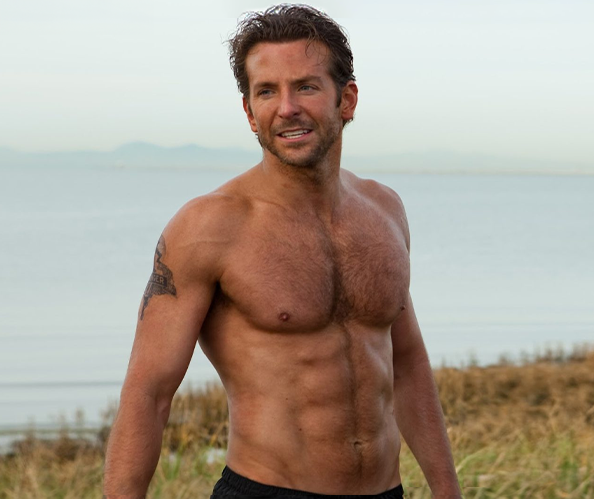
Bradley Cooper in the A-Team (2010)

Jake Gyllenhaal in Southpaw (2015)
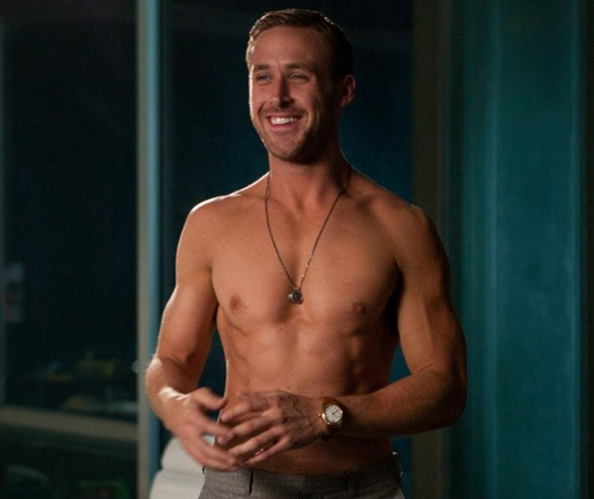
Ryan Gosling in Crazy, Stupid, Love (2011)
All the actors in the pictures above have intermediate muscle development. They may have less muscle mass than you do right now. But the reason they look great is because they’re very lean.
If you get lean as well, you’ll likely look similar to one of these nine actors, depending on how much muscle mass you have.
For example, here’s how I looked when I cut down from around 20% body fat to 13% and then 10%.
I tried to keep the same camera settings, angle, and lighting to make the comparison as fair as possible. Notice how when I’m leaner I appear to have more muscle mass. That’s not the case. I was actually smaller but the increased definition creates the illusion of more size. Also worth noting is that my muscles look flatter at 10% compared to 13%. That’s because I was pretty depleted by that point. If I ate more carbs for a few days I would “fill up” and look bigger.
You can achieve a similar transformation.
From my experience, most intermediates are happiest in the 11-13% body fat range. That’s the perfect balance between size, visible abs, muscle definition, strength, and general wellbeing. So I recommend you set that as your goal. The 8-10% range does look better but it comes with a few major downsides: less overall size, strength loss, more hunger, obsession with food, lower energy, lower sex drive, worse mood, and more mental stress. I recommend getting down to the 8-10% range only if you want to do a professional photoshoot: with a muscle pump and the right lighting you can take some truly fabulous pictures. Otherwise, it’s not worth getting that lean – at least not at the intermediate level.
If you’re now at 20% body fat, getting down to around 12% will require losing 5-15 kg of fat (10-35 lbs), depending on how much you weigh. But here’s the thing: most of us tend to significantly underestimate our starting body fat percentage. In my coaching experience, I’ve noticed that intermediate lifters typically reach ~12% body fat when their body weight in kilograms is equal to their height in centimeters minus 105 to 110.
body weight of intermediate lifters at ~12% BF = height in cm – 105 to 110
So for example, if you are 180 cm in height, I would expect you to reach ~12% body fat when you get down to between 70 and 75 kg. This means that if you currently weigh 80 kg and you’re 180 cm in height, you’ll likely need to lose 5 to 10 kg of fat. Obviously, this formula doesn’t work perfectly but it’s pretty accurate.
How ShredSmart will help you get lean
In order to get lean you must maintain a small, daily caloric deficit for as long as it takes to get the fat off.
Simple enough. The problem though lies in the “as long as it takes” part. The maximum sustainable rate of fat loss that doesn’t lead to muscle loss, frequent cheat days, and eating disorders is approximately 1% of your body weight per week. If you weigh 80 kg (175 lbs), that works out to a maximum rate of fat loss of 0.8 kg per week or 1.5 lbs per week. But it’s usually better to cut a bit slower than this – around 0.5 kg / 1 lb per week. So if you need to lose 10 kg (22 lbs) to get lean, that means you have to maintain a caloric deficit for 12-20 weeks.
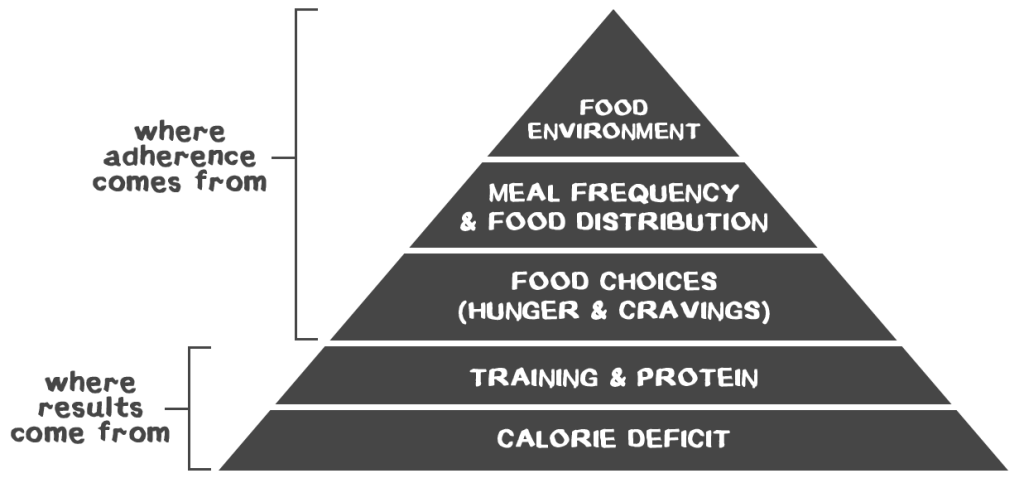
12-20 weeks of cutting…
This sounds hard, right? How can you possibly stick to a diet for that long? This is where ShredSmart comes in! ShredSmart shows you how to adjust your food choices, meal frequency, food distribution, and food environment to make adherence to the daily calorie and protein targets as easy and enjoyable as possible. When your plan is optimized for adherence, cutting for 12-20 weeks can actually be pretty easy.
The ShredSmart nutrition plan is designed to accomplish three things:
- Manage hunger
- Satisfy cravings
- Accommodate social eating
Managing hunger is top priority. It’s the make-or-break factor of the plan. What you eat and when you eat have minimal direct impact on fat loss and muscle growth but have a huge influence on how hungry you feel throughout the cut. Even though you could lose fat on a diet of high-calorie foods, snacks, and protein shakes, you would feel hungry all the time and you wouldn’t be able to sustain it for several months. It’s a major mistake to rely on willpower to resist hunger throughout a cut. The key to long-term adherence is to eat in such a way that makes you feel satiated after every meal despite being in a calorie deficit. With the ShredSmart program you’re going to manage hunger by eating mostly low calorie foods and doing intermittent fasting.

As you probably know, there’s a difference between food quantity and calorie content. It is possible to eat tiny amounts of food and still have a high caloric intake and it is possible to eat large amounts of food and still have a low caloric intake. It all depends on the foods you choose. On the ShredSmart program you’ll be eating mostly low-calorie, high-volume foods (the blue part of the spectrum) which will keep you nice and full.
But what about cravings? Could you resist eating your favorite foods and snacks for 3 months? Probably not. Most people that try to stick to boring, restrictive diets end up having cheat days a few times a week in order to satisfy their cravings. This can be a problem because it increases the overall length of the cut. If you’re not in a calorie deficit for two or three days per week, losing 10 kg of fat might take you 6 to 8 months instead of 3 to 5 months. And if you’re someone who loses motivation quickly, this might cause you to abandon the cut halfway through.
The good news is that you don’t need to have a very restrictive diet. On the ShredSmart program you will be able to eat any food you want in moderation while staying in a calorie deficit. The key to making that work is intermittent fasting. Intermittent fasting involves skipping breakfast and saving your calories for two or three large meals in the second part of the day. The higher calorie budget per meal gives you the freedom to include higher calorie foods like burgers, pizza, or desserts. Based on my experience and client testimonials, no other diet structure is as effective at managing hunger and satisfying cravings. Some clients find that they can eat so much and so unrestricted that they don’t even feel like they’re cutting for the first month or two.
Below you can see two examples of ShredSmart diet structures. The program gives you many more templates to choose from depending on when you train, your job schedule, and lifestyle preferences.

And intermittent fasting has another major benefit: it allows you to accommodate social eating. If you’re like most people, you share a meal with your family members at least once a day. You also frequently want to (or need to) attend social gatherings where delicious food and alcoholic drinks are served. This week it may be a birthday dinner, next week it may be a night at the movies, the week after that it may be a wedding or a holiday. These events can easily derail your efforts to maintain a calorie deficit. Even worse, cheat days are often triggered by social eating.
Many people find that they can easily stick to a calorie deficit when they prepare and eat their meals at home but when they’re with friends and family they simply cannot resist eating or drinking more, eliminating the calorie deficit in the process. Depending on how active your social life is, these events can force you to extend the cut by three to six weeks more than planned, which isn’t ideal for maintaining motivation. Intermittent fasting allows you to save most of your calories for the evening, so whenever you eat out, you have something like 1000 calories to play with. You can thus enjoy any type of food and beverage in moderation while not compromising your fat loss results.
How ShredSmart will help you build and maintain muscle
The energy deficit takes care of weight loss but the way you train and your daily protein intake determine what is being lost: fat or muscle. When your goal is to improve muscle definition, your main focus during a cut should not be just weight loss, it should be fat loss with muscle maintenance or growth. The nutrition section of ShredSmart will show you exactly how to set your calorie and protein intake and how to track them with a food scale and nutrition app. This will ensure your body has the fuel and the amino acids it needs to repair and grow muscle tissue.
But the most significant factor in muscle maintenance and growth is training. You need to lift weights in order to maintain or improve your size and strength. ShredSmart provides six training splits for you to choose from, depending on your preferences and time constraints: 4x Full Body, 4x Upper-Lower, 4x Push-Pull-Legs, 4x Leg, Push, Pull, Full Body, 3x Full Body, and 3x Upper, Lower, Upper. The training variables for each routine, including volume, frequency, effort, rest periods, and progression, are set based on the latest research.


What you’ll be doing…
- Calorie and protein tracking with a food scale and app
- 16:8 Intermittent Fasting
- Eating 2-3 meals per day
- Eating mostly low-calorie, high-volume foods
- Eating your favorite foods on a regular basis
- Strength training 3-4 days per week
- Progression model: Wave-loading linear periodization + Multi set double progression
- Walking ~5000 steps per day to burn calories (optional)
Testimonials
The pictures below are from the ShredSmart Facebook group. You get access to the community after enrolling in the program.


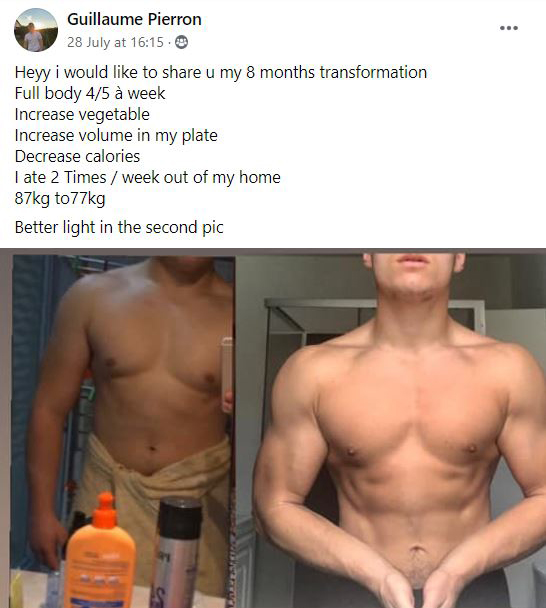
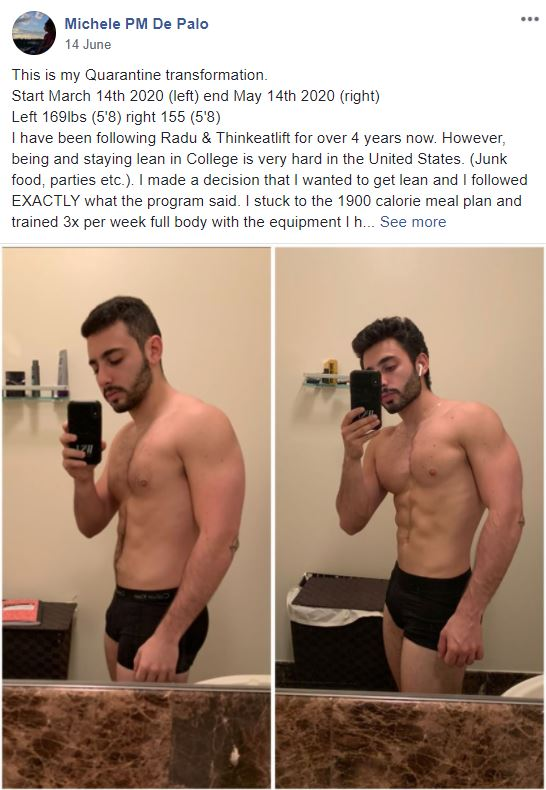
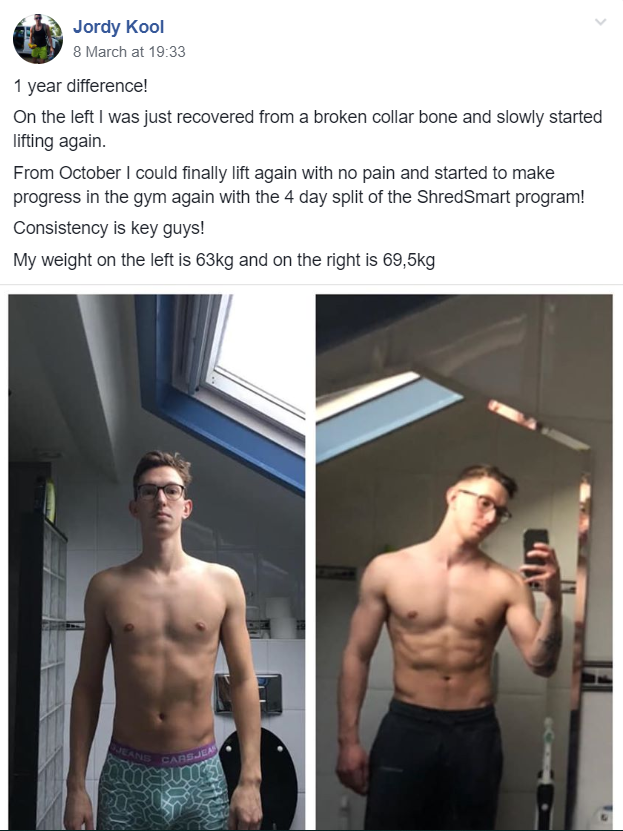

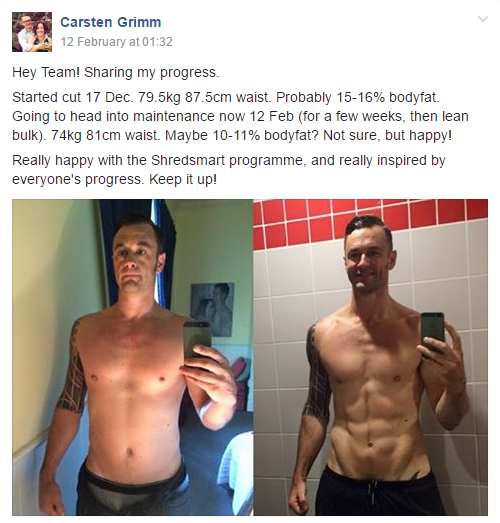
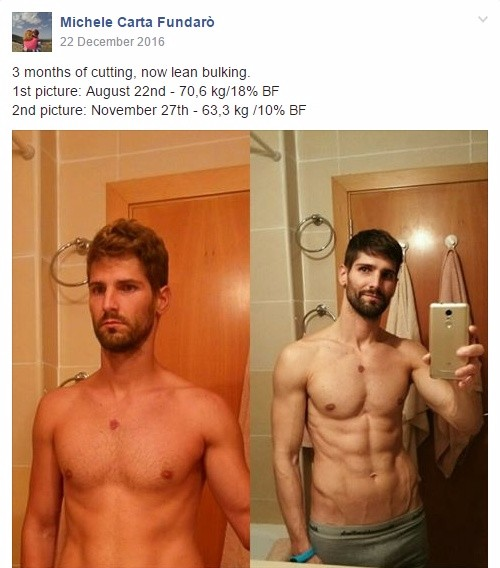

These transformations are obviously some of the best that were posted in the group. Not everyone gets such great results so quickly. But impressive transformations are posted fairly often. Join us and see!
Frequently Asked Questions
What do I get when joining ShredSmart?
ShredSmart is a 212-page PDF ebook that includes dozens of high-quality graphics and links to a few instructional YouTube videos to enhance your learning experience. ShredSmart is NOT a video course, at least not yet.
What is the commitment required?
The time commitment required to get lean depends on your starting body fat percentage. Intermediate lifters typically reach ~12% body fat when their body weight in kilograms is equal to their height in centimeters minus 105 to 110. So for example, if you are 180 cm in height, I would expect you to reach ~12% body fat when you get down to between 70 and 75 kg. This means that if you currently weigh 80 kg and you’re 180 cm in height, you’ll likely need to lose 5 to 10 kg of fat. ShredSmart will help you lose around 0.5 kg / 1 lb of fat per week. So you may need to stick to the program for 12-20 weeks to reach your goal. While occasional non-dieting days and missed workouts are acceptable, they should not happen frequently.
How do I know ShredSmart will work for me?
While I can’t guarantee specific results, my long-standing reputation in the business is a testament to my commitment to honesty and transparency. I will not mislead you about what you can achieve. ShredSmart has more than 5000 members and the refund rate is just 1.9%.
Will I need to eat boring food?
Not at all. ShredSmart does not include strict meal plans. You get to choose the foods you eat. Most ShredSmart members prefer to create 6-8 meals that fit their macros and rotating through them. I’ll provide guidance on how to do this.
Is ShredSmart suitable for vegetarians or vegans?
Yes. All the meal examples included in ShredSmart are vegan. I’ve been vegan myself since 2018, so the results you see on this page have been achieved on a vegan diet. All the meals can be easily adapted to include meat, dairy, and eggs, it’s just that I encourage people to adopt a more plant-based diet for ethical and environmental reasons.
Other questions?
Email me at radu@raduantoniu.com and I’ll reply.
Notes & Disclaimer
The authors of this site are not engaged in rendering professional advice or services to the individual reader. Radu Antoniu is not a certified personal trainer or coach and is not accredited by any institution. The ideas, procedures, and suggestions contained within our work are not intended as a substitute for consulting with your physician. All matters regarding your health require medical supervision. The authors shall not be liable or responsible for any loss or damage allegedly arising from any information or suggestions within this website. You, as a reader of this website, are totally and completely responsible for your own health and healthcare.
Your results may vary. Testimonials and examples used are exceptional results and are not intended to guarantee, promise, represent and/or assure that anyone will achieve the same or similar results.